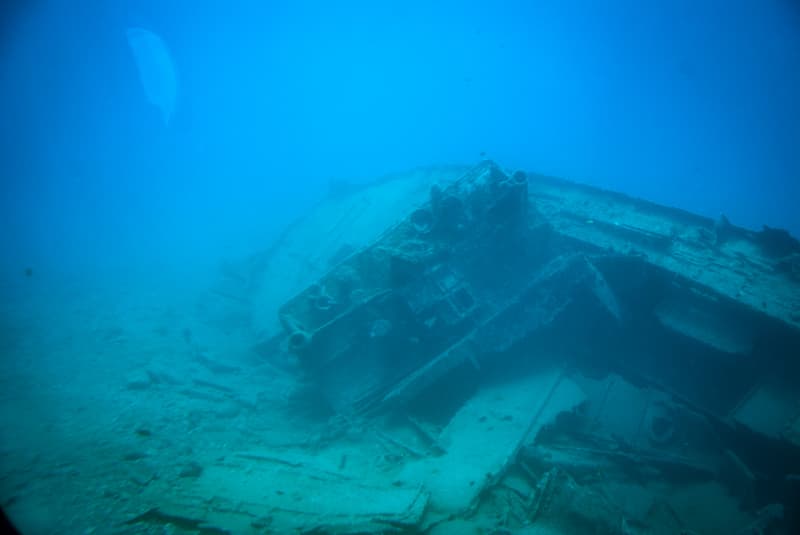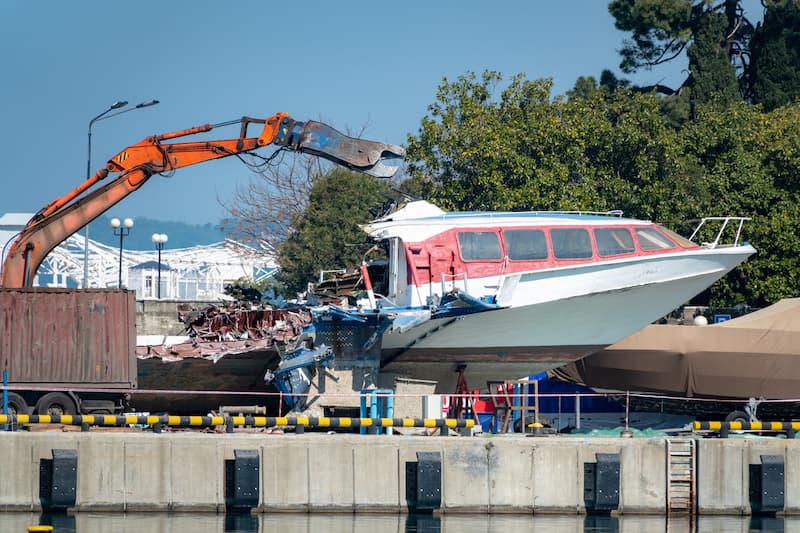Shipwrecks have been an ongoing issue for many centuries. Although large vessels are commanders of the seas, even they can succumb to difficulties, much like any land vehicle. The difference is when a car or lorry breaks down, it can easily be brought to peace at a scrap yard. Unfortunately, the same cannot be said for great sunken ships. It can take over a century before the vessel is found, and the chances of recovery are very slim.
As a scrap metal recycling facility, we take great interest in the process of ships and the importance scrap metal recycling plays in the industry. Here, we explore a recent discovery of a ship that went missing 140 years ago and why it may never be recovered.
A Brief History of SS Virago
140 years ago, the SS Virago set sail from Hull to the port of Odesa, which was part of the Russian empire at the time, but unfortunately never made it past the English Channel. At the time of departure, the ship was carrying over 1000 tonnes of metalwork, including steam engines, wheels, ironworks, and other machinery. Steamships such as the SS Virago were vital players in the British Empire because they were the primary transportation of goods and passengers. To their demise, the navigational equipment and sophisticated technology which guides ships of today were not something these ships could utilise, and many of them perished to devastating ends.
Not much information was known about the missing ship until its recent identification after a successful dive this summer. There were no records of what had happened, the only noteworthy piece of information was the fact that there was a lot of fog throughout its journey. In fact, the ship was only reported as missing when a body washed ashore near Cherbourg sometime after it sank. There were no survivors of the disaster, and prior to discovery in 2009, the only remains of the missing ship were the four lifeboats found off Dieppe and Alderney.
SS Virago was initially discovered in 2009 during a seabed survey for a potential tidal technology, but it was challenging to identify. Due to the tidal currents, there is only a 20-minute window where divers can safely access this part of the seabed, making it tough to get an in-depth analysis.
The Importance of Finding the SS Virago
Although many ships have gone missing, identifying them can be difficult due to lost records. The fact divers have been able to identify the lost ship now allows the families of the 26 missing crew members to acknowledge the final resting place of their family members from up to five or six generations previous. This discovery is being classed as a once-in-a-lifetime event.
Unfortunately, although the ship contains a significant amount of steel, the ship will likely remain on the seabed. Even though several vessels over the years have been reasonably easy to recover and their parts dismantled for scrap metal recycling, this 140-year-old ship will most likely be too delicate to remove. Whilst there is an ability to recover ships, it isn’t always worth the dangers and resources it will entail. Unless there is a significant environmental impact on the waters in which it lies, with potential oil spills and pollutants, planes, trains, and ships are usually left to help create living reefs for sea life.
The Importance of Scrap Metal Recycling in Shipbuilding
Although it isn’t often a ship is recovered for scrap metal recycling, it is necessary once a ship is decommissioned. Decommissioning of a vessel can happen for many reasons. For example, being prominent captains of the sea, it may often be too expensive to repair to ensure safety onboard, or the ship’s owners may have suffered financial hardships resulting in the sale of assets. Essentially, however, a ship will only be sent to the scrap yard if there is no ability to let it set sail again safely.
For example, after the Covid 19 pandemic, there was a significant increase in ships being sent to the scrap yard. All the idling and lack of use caused them to seize and fall into disrepair, meaning once they were needed again, they were unavailable. Scrapping them allowed the owner to make money from the vessel whilst ensuring the disposal of the ship was done to help the environment.
Scrapping a ship for parts provides the metal industry with a significant amount of metal to recycle into new products and assist with future shipbuilding. Metal recycling services produce new materials for the metal industry using up to 75% less for the like of steel than mining for new material.
Unlike other recyclable materials, metal doesn’t lose its qualities or strength through recycling, meaning it can be recycled infinitely. Additionally, most cargo ships are built with thousands of tonnes of steel, offering the metal industry a significant amount, and reducing the need to mine for more.
Scrap Metal Recycling at Morecambe Metals
Although haven’t the capabilities to scrap an entire cargo ship, we offer a range of other services that offer large-scale scrap metal recycling. For example, we provide industrial dismantling services, which can successfully dismantle commercial buildings and process scrap metal from the building. With over 35 years of experience in the scrap metal industry, we offer expert advice and services unbeaten in the local area.
So, if you have a shipyard building needing dismantling, give us a call!



